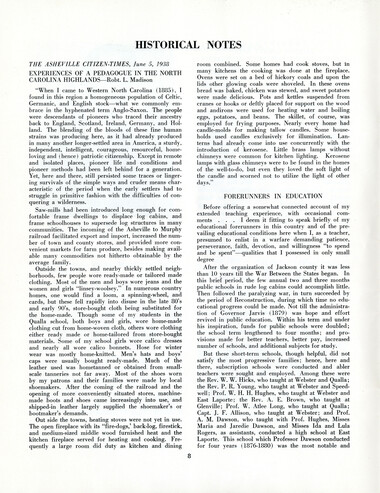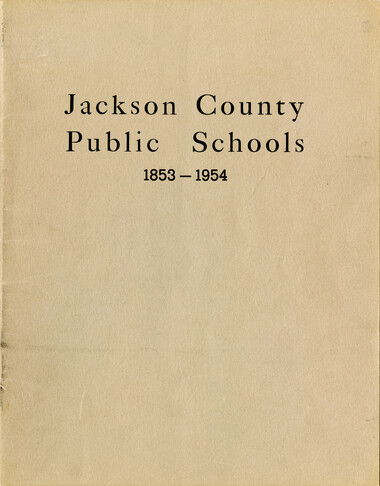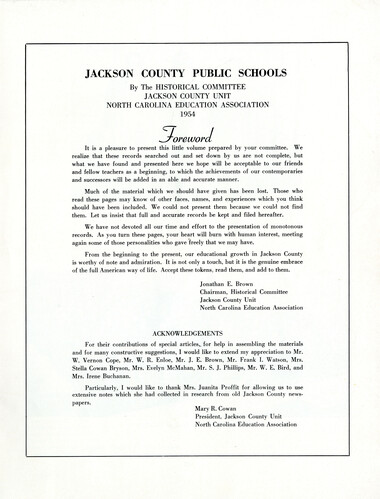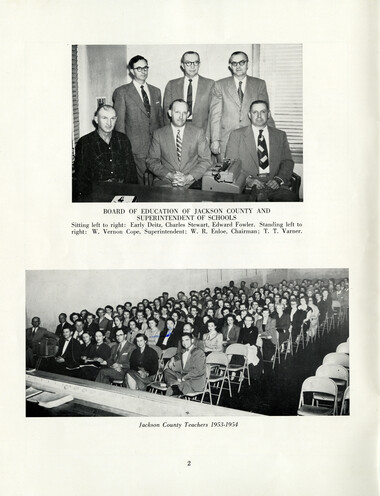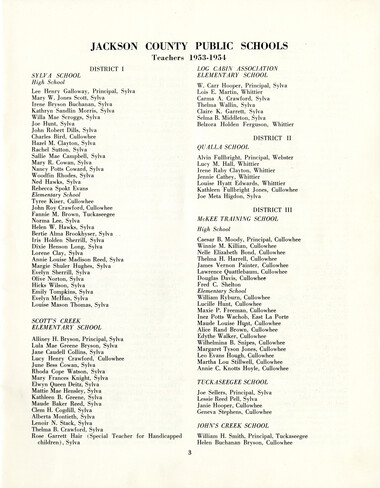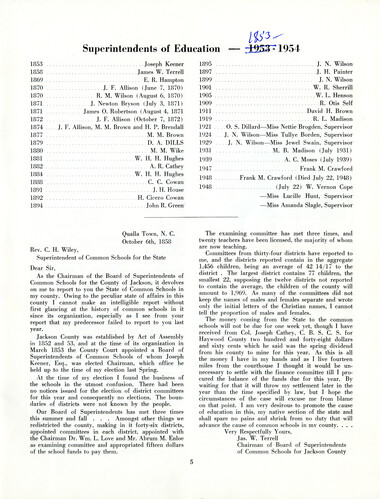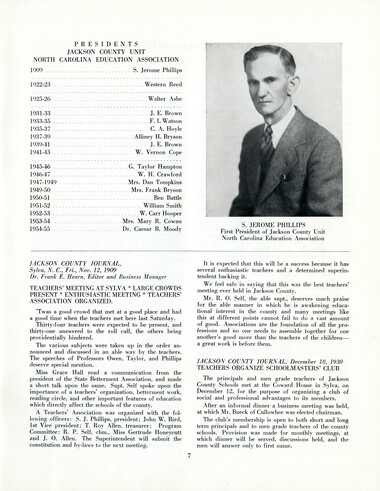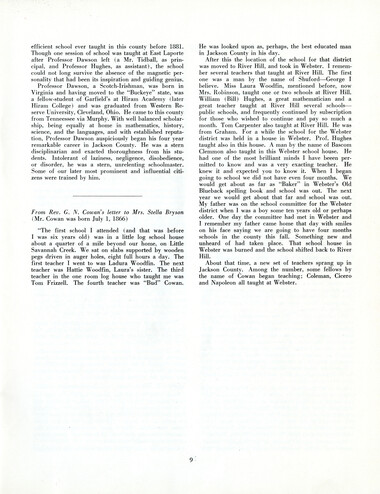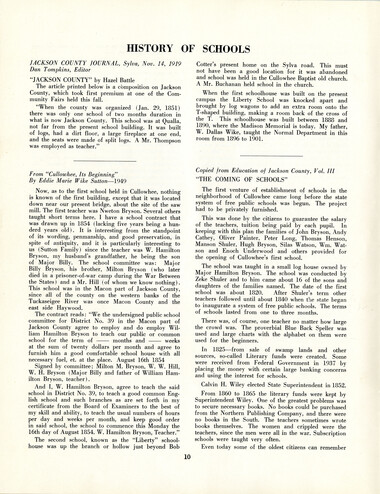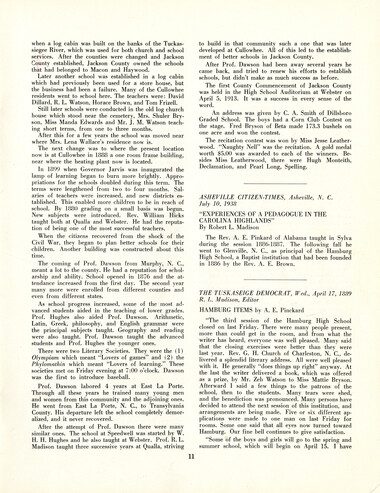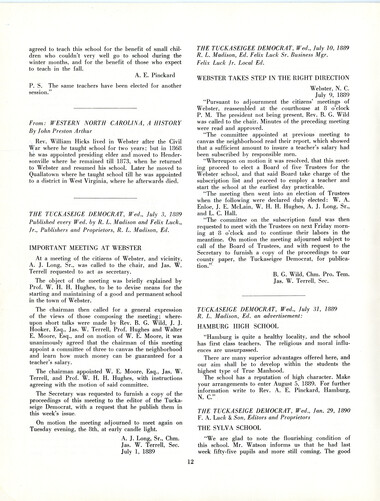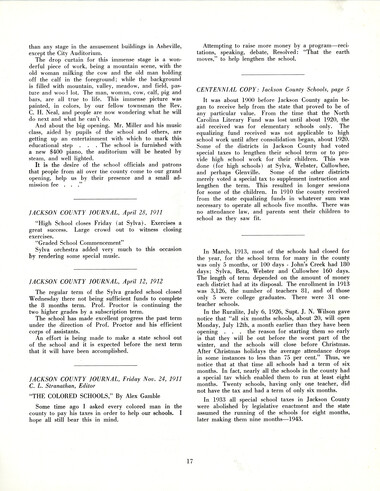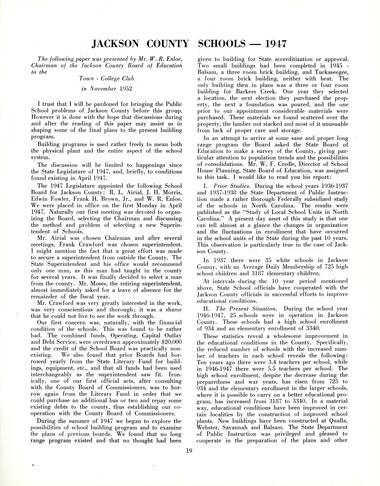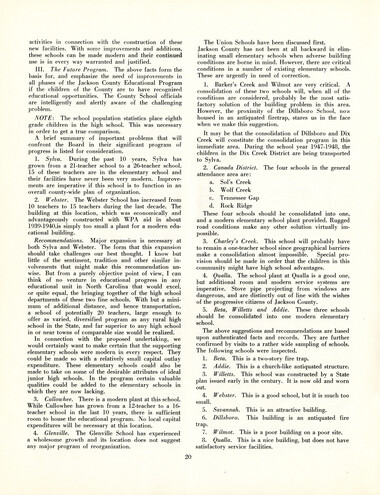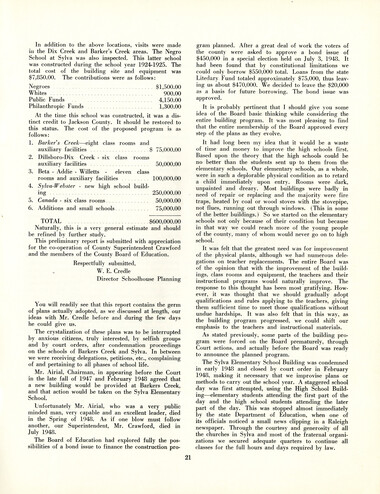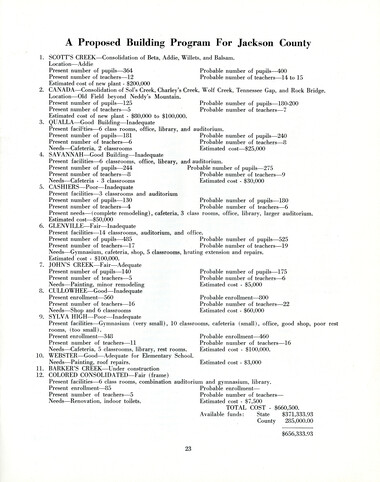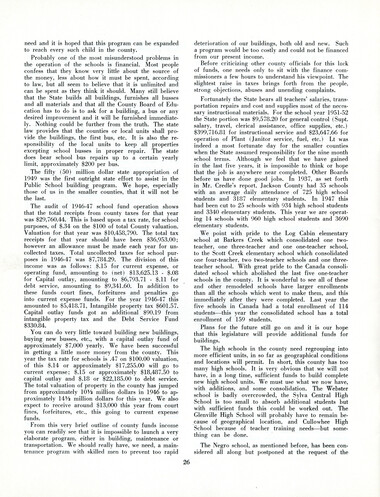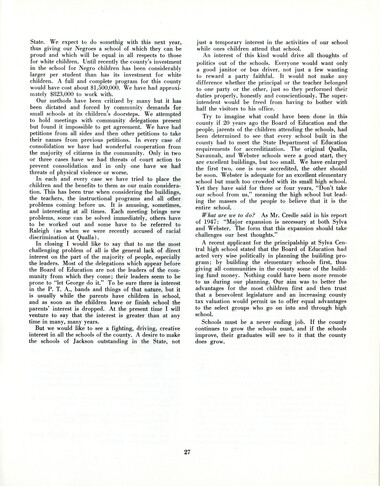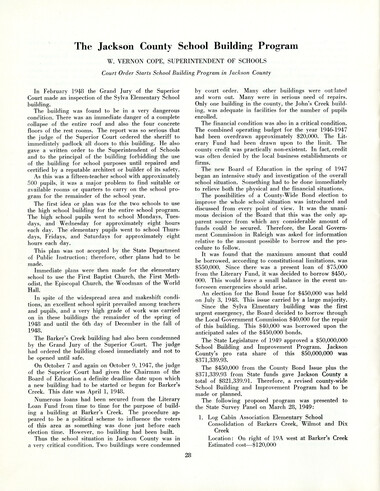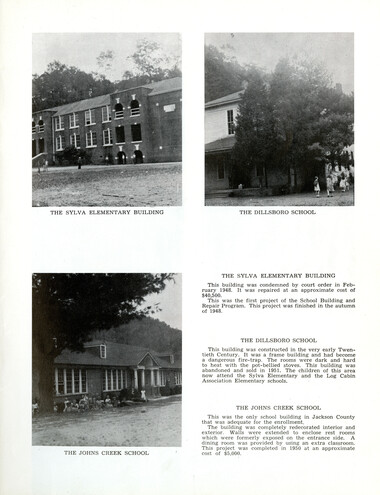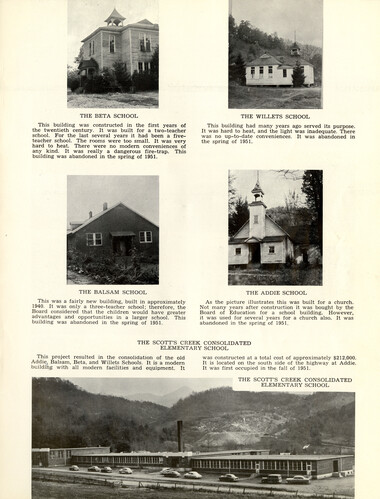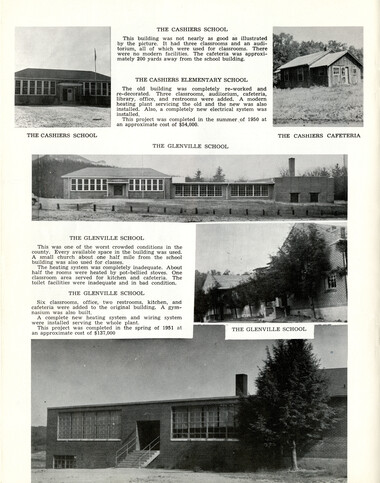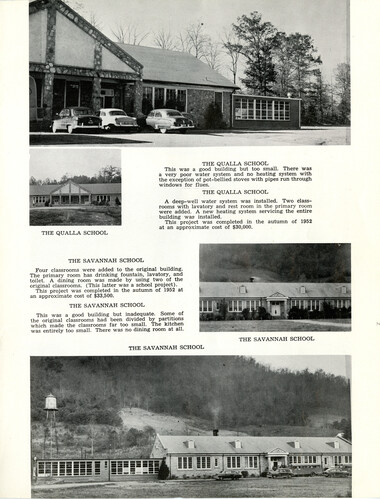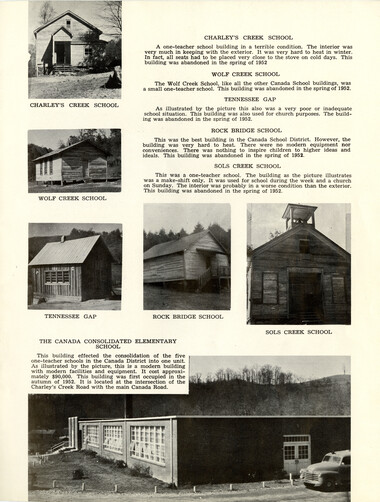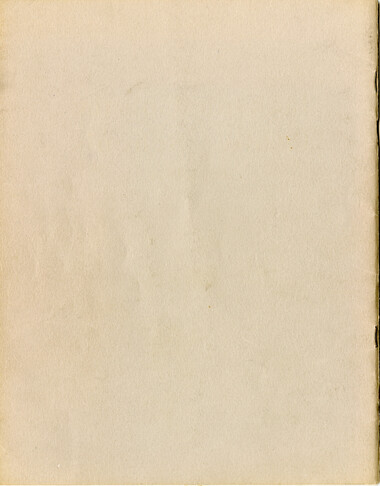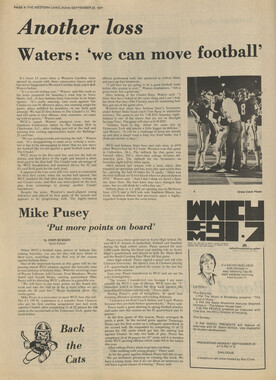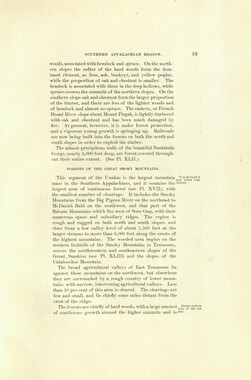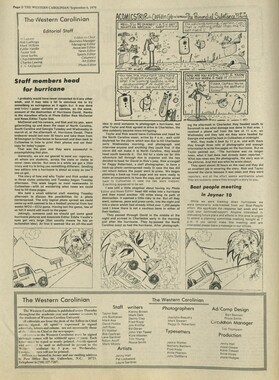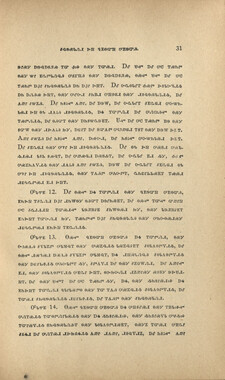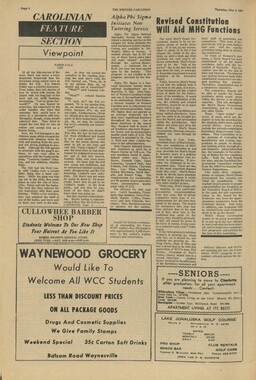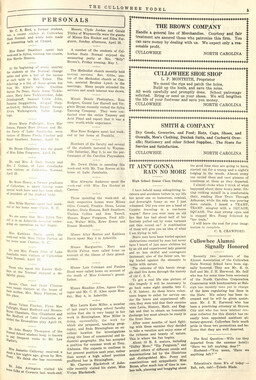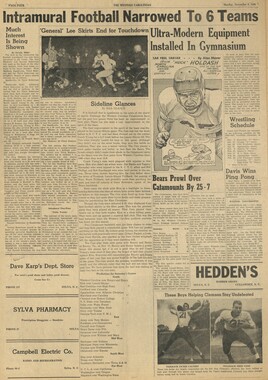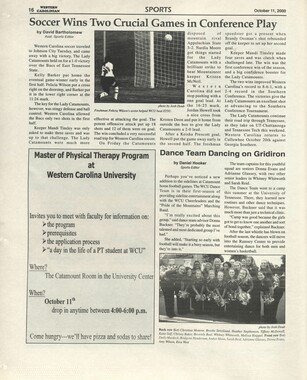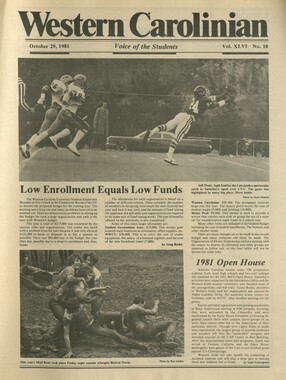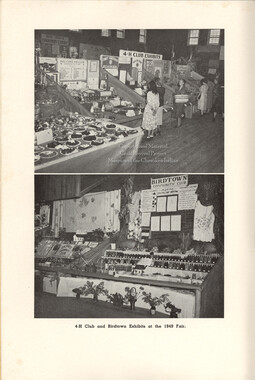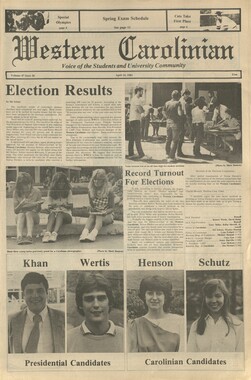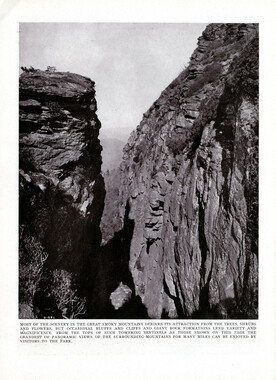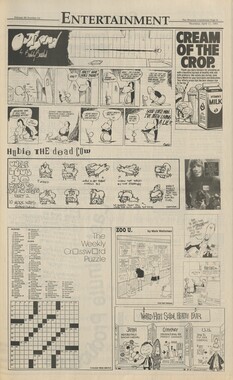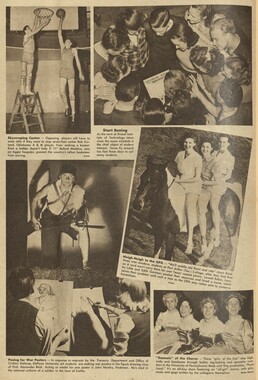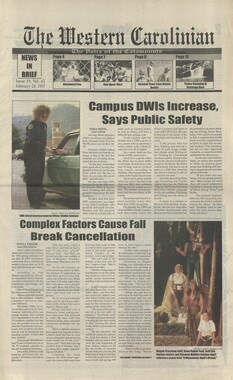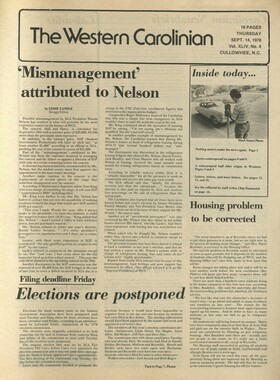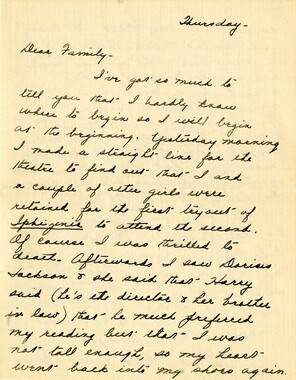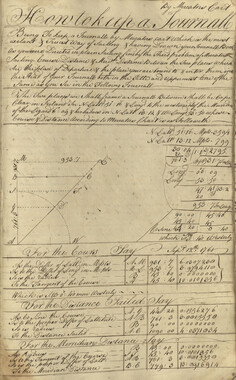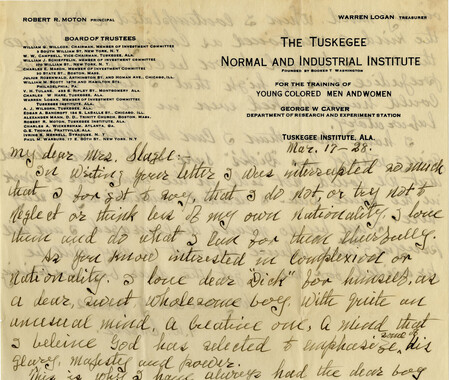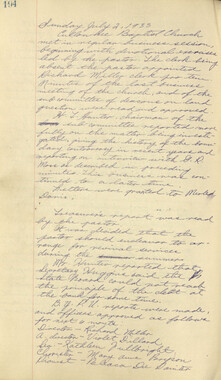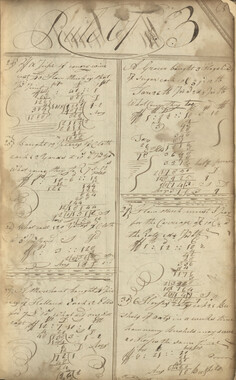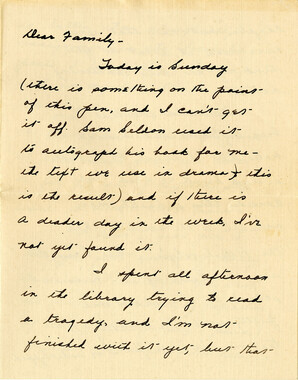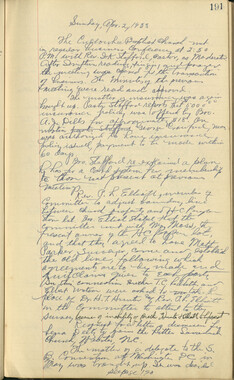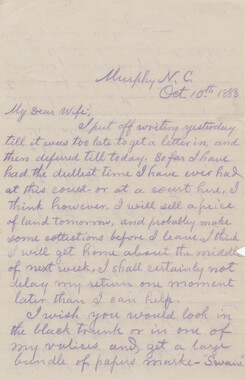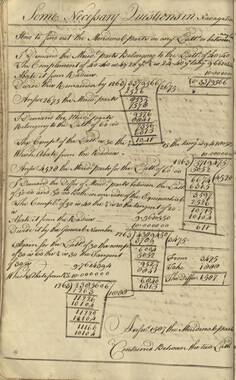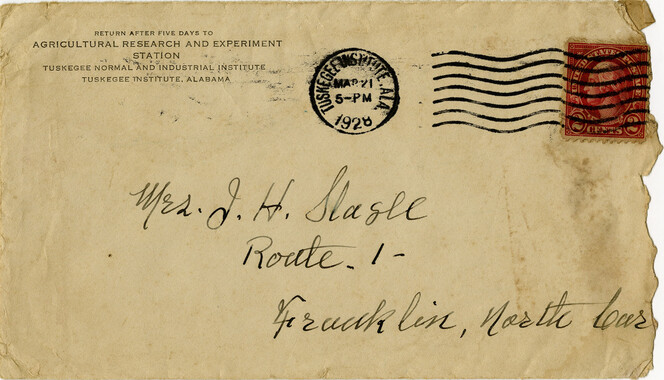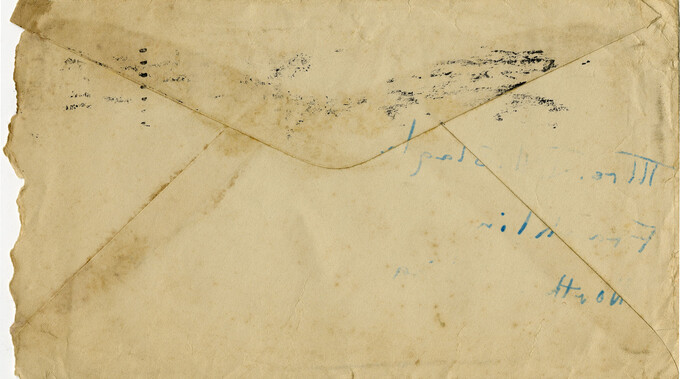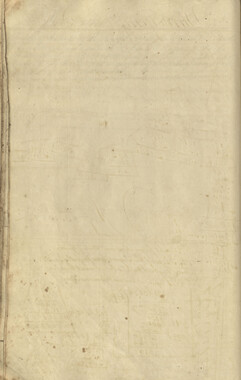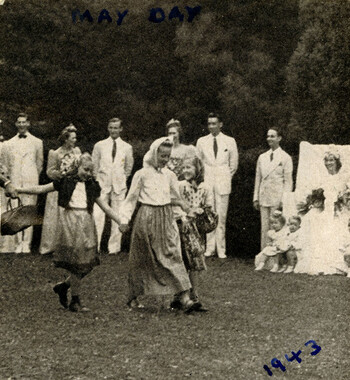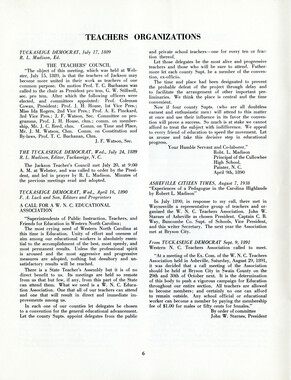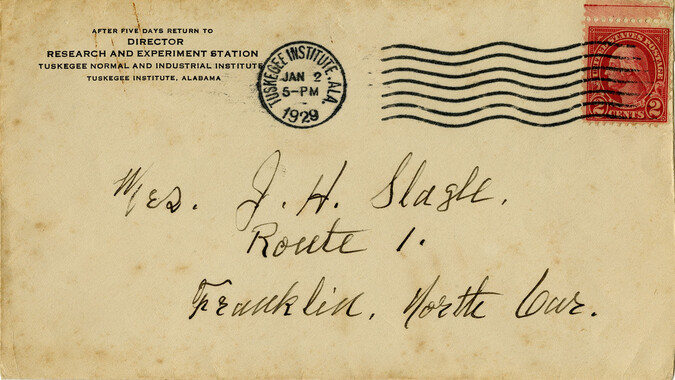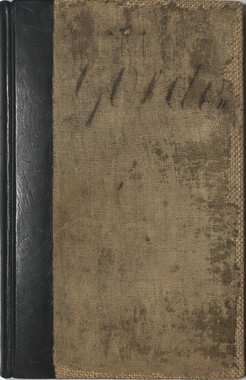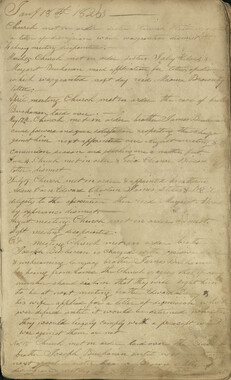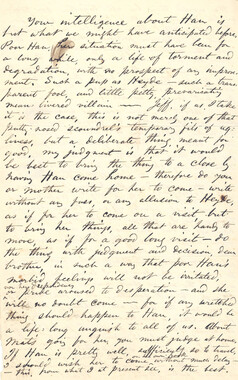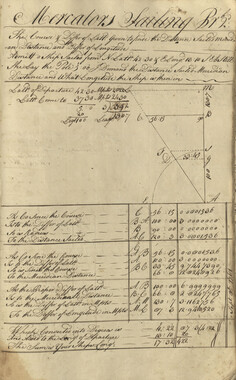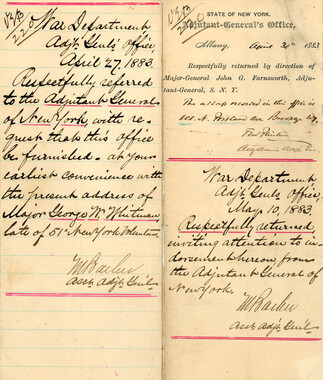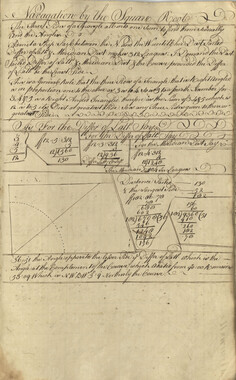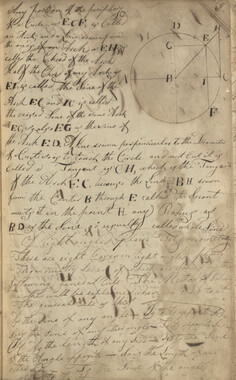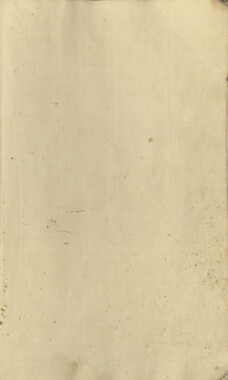Western Carolina University (5)
View all
- Civil War in Southern Appalachia (2)
- Craft Revival (11)
- Great Smoky Mountains - A Park for America (2)
- Highlights from Western Carolina University (4)
- Picturing Appalachia (7)
- Canton Champion Fibre Company (0)
- Cherokee Traditions (0)
- Horace Kephart (0)
- Journeys Through Jackson (0)
- LGBTQIA+ Archive of Jackson County (0)
- Oral Histories of Western North Carolina (0)
- Stories of Mountain Folk (0)
- Travel Western North Carolina (0)
- Western Carolina University Fine Art Museum Vitreograph Collection (0)
- Western Carolina University Herbarium (0)
- Western Carolina University: Making Memories (0)
- Western Carolina University Publications (0)
- Western Carolina University Restricted Electronic Theses and Dissertations (0)
- Western North Carolina Regional Maps (0)
- World War II in Southern Appalachia (0)
University of North Carolina Asheville (0)
View all
- Faces of Asheville (0)
- Forestry in Western North Carolina (0)
- Grove Park Inn Photograph Collection (0)
- Isaiah Rice Photograph Collection (0)
- Morse Family Chimney Rock Park Collection (0)
- Picturing Asheville and Western North Carolina (0)
- Appalachian Region, Southern (6)
- Blount County (Tenn.) (1)
- Cherokee County (N.C.) (1)
- Great Smoky Mountains National Park (N.C. and Tenn.) (1)
- Haywood County (N.C.) (4)
- Jackson County (N.C.) (4)
- Asheville (N.C.) (0)
- Avery County (N.C.) (0)
- Buncombe County (N.C.) (0)
- Clay County (N.C.) (0)
- Graham County (N.C.) (0)
- Henderson County (N.C.) (0)
- Knox County (Tenn.) (0)
- Knoxville (Tenn.) (0)
- Lake Santeetlah (N.C.) (0)
- Macon County (N.C.) (0)
- Madison County (N.C.) (0)
- McDowell County (N.C.) (0)
- Mitchell County (N.C.) (0)
- Polk County (N.C.) (0)
- Qualla Boundary (0)
- Rutherford County (N.C.) (0)
- Swain County (N.C.) (0)
- Transylvania County (N.C.) (0)
- Watauga County (N.C.) (0)
- Waynesville (N.C.) (0)
- Yancey County (N.C.) (0)
- Artifacts (object Genre) (5)
- Crafts (art Genres) (5)
- Letters (correspondence) (4)
- Minutes (administrative Records) (1)
- Photographs (3)
- Portraits (1)
- Publications (documents) (8)
- Sound Recordings (1)
- Transcripts (1)
- Aerial Photographs (0)
- Aerial Views (0)
- Albums (books) (0)
- Articles (0)
- Biography (general Genre) (0)
- Cards (information Artifacts) (0)
- Clippings (information Artifacts) (0)
- Depictions (visual Works) (0)
- Design Drawings (0)
- Drawings (visual Works) (0)
- Envelopes (0)
- Facsimiles (reproductions) (0)
- Fiction (general Genre) (0)
- Financial Records (0)
- Fliers (printed Matter) (0)
- Glass Plate Negatives (0)
- Guidebooks (0)
- Internegatives (0)
- Interviews (0)
- Land Surveys (0)
- Manuscripts (documents) (0)
- Maps (documents) (0)
- Memorandums (0)
- Negatives (photographs) (0)
- Newsletters (0)
- Newspapers (0)
- Occupation Currency (0)
- Paintings (visual Works) (0)
- Pen And Ink Drawings (0)
- Periodicals (0)
- Personal Narratives (0)
- Plans (maps) (0)
- Poetry (0)
- Postcards (0)
- Programs (documents) (0)
- Questionnaires (0)
- Scrapbooks (0)
- Sheet Music (0)
- Slides (photographs) (0)
- Specimens (0)
- Speeches (documents) (0)
- Text Messages (0)
- Tintypes (photographs) (0)
- Video Recordings (physical Artifacts) (0)
- Vitreographs (0)
- Cataloochee History Project (1)
- Love Family Papers (1)
- A.L. Ensley Collection (0)
- Appalachian Industrial School Records (0)
- Appalachian National Park Association Records (0)
- Axley-Meroney Collection (0)
- Bayard Wootten Photograph Collection (0)
- Bethel Rural Community Organization Collection (0)
- Blumer Collection (0)
- C.W. Slagle Collection (0)
- Canton Area Historical Museum (0)
- Carlos C. Campbell Collection (0)
- Cherokee Studies Collection (0)
- Daisy Dame Photograph Album (0)
- Daniel Boone VI Collection (0)
- Doris Ulmann Photograph Collection (0)
- Elizabeth H. Lasley Collection (0)
- Elizabeth Woolworth Szold Fleharty Collection (0)
- Frank Fry Collection (0)
- George Masa Collection (0)
- Gideon Laney Collection (0)
- Hazel Scarborough Collection (0)
- Hiram C. Wilburn Papers (0)
- Historic Photographs Collection (0)
- Horace Kephart Collection (0)
- Humbard Collection (0)
- Hunter and Weaver Families Collection (0)
- I. D. Blumenthal Collection (0)
- Isadora Williams Collection (0)
- Jesse Bryson Stalcup Collection (0)
- Jim Thompson Collection (0)
- John B. Battle Collection (0)
- John C. Campbell Folk School Records (0)
- John Parris Collection (0)
- Judaculla Rock project (0)
- Kelly Bennett Collection (0)
- Major Wiley Parris Civil War Letters (0)
- Map Collection (0)
- McFee-Misemer Civil War Letters (0)
- Mountain Heritage Center Collection (0)
- Norburn - Robertson - Thomson Families Collection (0)
- Pauline Hood Collection (0)
- Pre-Guild Collection (0)
- Qualla Arts and Crafts Mutual Collection (0)
- R.A. Romanes Collection (0)
- Rosser H. Taylor Collection (0)
- Samuel Robert Owens Collection (0)
- Sara Madison Collection (0)
- Sherrill Studio Photo Collection (0)
- Smoky Mountains Hiking Club Collection (0)
- Stories of Mountain Folk - Radio Programs (0)
- The Reporter, Western Carolina University (0)
- Venoy and Elizabeth Reed Collection (0)
- WCU Gender and Sexuality Oral History Project (0)
- WCU Mountain Heritage Center Oral Histories (0)
- WCU Oral History Collection - Mountain People, Mountain Lives (0)
- WCU Students Newspapers Collection (0)
- Western North Carolina Tomorrow Black Oral History Project (0)
- William Williams Stringfield Collection (0)
- Zebulon Weaver Collection (0)
- Education (1)
- Maps (1)
- Pottery (1)
- Weaving -- Appalachian Region, Southern (5)
- African Americans (0)
- Appalachian Trail (0)
- Artisans (0)
- Cherokee art (0)
- Cherokee artists -- North Carolina (0)
- Cherokee language (0)
- Cherokee pottery (0)
- Cherokee women (0)
- Church buildings (0)
- Civilian Conservation Corps (U.S.) (0)
- College student newspapers and periodicals (0)
- Dams (0)
- Dance (0)
- Floods (0)
- Folk music (0)
- Forced removal, 1813-1903 (0)
- Forest conservation (0)
- Forests and forestry (0)
- Gender nonconformity (0)
- Great Smoky Mountains National Park (N.C. and Tenn.) (0)
- Hunting (0)
- Landscape photography (0)
- Logging (0)
- Mines and mineral resources (0)
- North Carolina -- Maps (0)
- Paper industry (0)
- Postcards (0)
- Railroad trains (0)
- Rural electrification -- North Carolina, Western (0)
- School integration -- Southern States (0)
- Segregation -- North Carolina, Western (0)
- Slavery (0)
- Sports (0)
- Storytelling (0)
- Waterfalls -- Great Smoky Mountains (N.C. and Tenn.) (0)
- Wood-carving -- Appalachian Region, Southern (0)
- World War, 1939-1945 (0)
- Sound (1)
- StillImage (17)
- Text (10)
- MovingImage (0)
Jackson County Public Schools 1853-1954
Item
Item’s are ‘child’ level descriptions to ‘parent’ objects, (e.g. one page of a whole book).
-
-
HISTORICAL NOTES THE ASHEVILLE CITIZEN-TIMES, June 5, 1938 EXPERIENCES OF A PEDAGOGUE IN THE NORTH CAROLINA HIGHLANDS—Robt. L. Madison "When I came to Western North Carolina (1885), I found in this region a homogeneous population of Celtic, Germanic, and English stock—what we commonly embrace in the hyphenated term Anglo-Saxon. The people were descendants of pioneers who traced their ancestry back to England, Scotland, Ireland, Germany, and Holland. The blending of the bloods of these fine human strains was producing here, as it had already produced in many another longer-settled area in America, a sturdy, independent, intelligent, courageous, resourceful, home- loving and (hence) patriotic citizenship. Except in remote and isolated places, pioneer life and conditions and pioneer methods had been left behind for a generation. Yet, here and there, still persisted some traces or lingering survivals of the simple ways and cruder means characteristic of the period when the early settlers had to struggle in primitive fashion with the difficulties of conquering a wilderness. Saw-mills had been introduced long enough for comfortable frame dwellings to displace log cabins, and frame schoolhouses to supersede log structures in many communities. The incoming of the Asheville to Murphy railroad facilitated export and import, increased the number of town and county stores, and provided more convenient markets for farm produce, besides making available many commodities not hitherto obtainable by the average family. Outside the towns, and nearby thickly settled neighborhoods, few people wore ready-made or tailored made clothing. Most of the men and boys wore jeans and the women and girls "linsey-woolsey." In numerous country homes, one would find a loom, a spinning-wheel, and cards, but these fell rapidly into disuse in the late 80's and early 90's, store-bought cloth being substituted for the home-made. Though some of my students in the Qualla school, both boys and girls, wore home-made clothing cut from home-woven cloth, others wore clothing either ready made or home-tailored from store-bought materials. Some of my school girls wore calico dresses and nearly all wore calico bonnets. Hose for winter wear was mostly home-knitted. Men's hats and boys' caps were usually bought ready-made. Much of the leather used was hometanned or obtained from small- scale tanneries not far away. Most of the shoes worn by my patrons and their families were made by local shoemakers. After the coming of the railroad and the opening of more conveniently situated stores, machine- made boots and shoes came increasingly into use, and shipped-in leather largely supplied the shoemaker's or bootmaker's demands. Out side the towns, heating stoves were not yet in use. The open fireplace with its "fire-dogs,5 back-log, firestick, and medium-sized middle wood furnished heat and the kitchen fireplace served for heating and cooking. Frequently a large room did duty as kitchen and dining room combined. Some homes had cook stoves, but in many kitchens the cooking was done at the fireplace. Ovens were set on a bed of hickory coals and upon the lids other glowing coals were shoveled. In these ovens bread was baked, chicken was stewed, and sweet potatoes were made delicious. Pots and kettles suspended from cranes or hooks or deftly placed for support on the wood and andirons were used for heating water and boiling eggs, potatoes, and beans. The skillet, of course, was employed for frying purposes. Nearly every home had candle-molds for making tallow candles. Some households used candles exclusively for illumination. Lanterns had already come into use concurrently with the introduction of kerosene. Little brass lamps without chimneys were common for kitchen lighting. Kerosene lamps with glass chimneys were to be found in the homes of the well-to-do, but even they loved the soft light of the candle and scorned not to utilize the light of other days." FORERUNNERS IN EDUCATION Before offering a somewhat connected account of my extended teaching experience, with occasional comments ... I deem it fitting to speak briefly of my educational forerunners in this country and of the prevailing educational conditions here when I, as a teacher, presumed to enlist in a warfare demanding patience, perseverance, faith, devotion, and willingness "to spend and be spent"—qualities that I possessed in only small degree After the organization of Jackson county it was less than 10 years till the War Between the States began. In this brief period, the few annual two and three months public schools in rude log cabins could accomplish little. Then followed the paralyzing war, in turn succeeded by the period of Reconstruction, during which time no educational progress could be made. Not till the administration of Governor Jarvis (1879) was hope and effort revived in public education. Within his term and under his inspiration, funds for public schools were doubled; the school term lengthened to four months; and provisions made for better teachers, better pay, increased number of schools, and additional subjects for study. But these short-term schools, though helpful, did not satisfy the most progressive families; hence, here and there, subscription schools were conducted and abler teachers were sought and employed. Among these were the Rev. W. W. Hicks, who taught at Webster and Qualla; the Rev. P. R. Young, who taught at Webster and Speedwell; Prof. W. H. H. Hughes, who taught at Webster and East Laporte; the Rev. A. E. Brown, who taught at Glenville; Prof. W. Atlee Long, who taught at Qualla; Capt. J. F. Allison, who taught at Webster; and Prof. A. M. Dawson, who taught with Prof. Hughes, Misses Maria and Jaredie Dawson, and Misses Ida and Lula Rogers, as assistants, conducted a high school at East Laporte. This school which Professor Dawson conducted for four years (1876-1880) was the most notable and
Object
Object’s are ‘parent’ level descriptions to ‘children’ items, (e.g. a book with pages).
-
This 44-page booklet discusses many aspects of Jackson County Public Schools over a hundred year period from 1853-1954. Photographs of schools are included.
-
